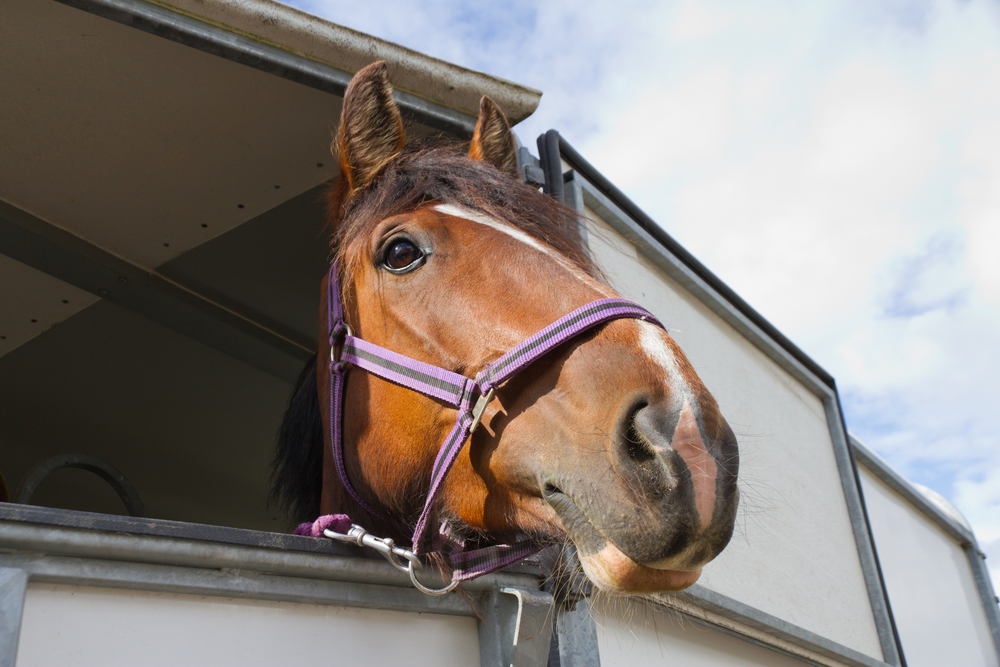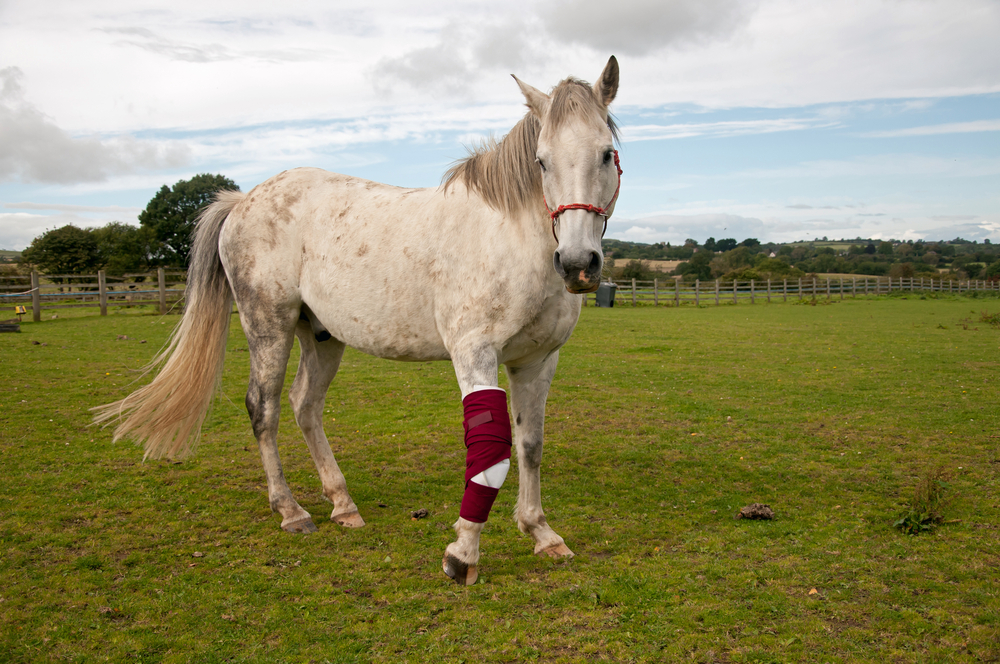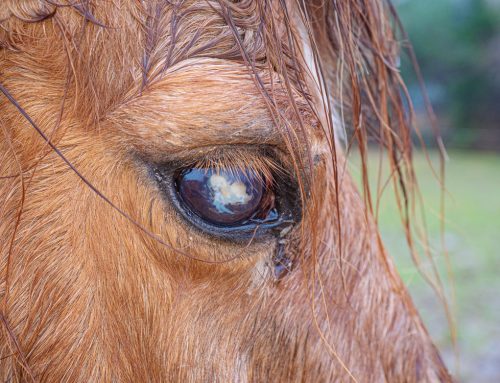Many horses seem to be accident prone, and an emergency can happen at any time. To help you feel prepared when your horse has an emergency, our Leatherstocking Veterinary Services team provides important advice about equine first-aid basics.
Normal horse observations
Knowing normal horse vitals and behavior is important, so you can recognize abnormalities if they occur. Normal findings include:
- Temperature — An adult horse’s temperature should be 99 to 101 degrees. Insert a digital thermometer into your horse’s rectum to take their temperature. Wait for the thermometer to beep before reading the temperature.
- Heart rate — A normal adult horse’s heart rate is about 28 to 44 beats per minute. Take your horse’s heart rate by feeling the underside of their jawbone where their mandibular artery runs. Count the beats you feel in 15 seconds, and multiply the number by four to determine the horse’s resting heart rate. You can also use a stethoscope to determine your horse’s heart rate. Listen to your horse’s heart on their left side, behind their elbow.
- Respiration rate — A normal adult horse’s respiratory rate is 10 to 24 breaths per minute. Watch their flank to count their breaths in 15 seconds and multiply the number by four.
- Gut sounds — The normal horse gut is noisy, and typically makes different sounds about every 20 seconds. A silent gut is problematic. Use a stethoscope to listen to your horse’s abdomen—on either side of their body—to get an idea of their normal gut sounds.
- Mucous membranes — A normal horse’s mucous membranes should be light pink and glossy. Lift your horse’s upper lip to assess their mucous membranes.
- Manure output — Monitor your horse’s manure output to ensure they have an appropriate amount and consistency. Hard, dry fecal balls, or no manure indicates a problem.
- Appetite — If your horse refuses a meal, they are likely experiencing a health problem that your veterinarian should analyze further.
First aid for the colicky horse
Colic is a general term that describes gastrointestinal pain and is a common equine emergency condition. Signs include reduced appetite, decreased fecal output, lethargy, increased heart and respiratory rates, and distress signs such as restlessness, pawing, circling, kicking at the abdomen, and rolling. If your horse is colicking, tips include:
- Call your veterinarian — If your horse is not passing manure or is exhibiting pain, notify our Leatherstocking Veterinary Services team, so we can determine the best approach to address your horse’s issue.
- Keep your horse walking — If your horse is attempting to go down, keep them walking until the veterinarian arrives.
- Remove your horse’s food — To prevent your horse from continuing to eat—potentially worsening their condition—remove their grain and hay.
First aid for horse wounds
Horses are usually confined to areas enclosed by metal or wire, making wounds fairly common. If your horse sustains a laceration or puncture wound, do the following:
- Get help — An injured horse may strike or kick because they are in pain. Move your horse to a quiet area, and have someone hold them while you evaluate the wound.
- Assess the wound — Use a flashlight to evaluate the wound properly, and call your veterinarian if:
- The wound is excessively bleeding
- A puncture wound is present
- The wound is more than skin-deep, or more than a few centimeters long
- The wound is over a joint or tendon
- The wound is contaminated
- Your horse is lame
- You are unsure of the wound’s severity
- Your horse stepped on a nail — Do not remove the nail—your veterinarian needs to X-ray your horse’s foot to determine which foot structures the nail has entered.
- Clean the wound gently — Avoid aggressively scrubbing your horse’s wound or using a strong disinfectant because you can damage the tissue and impede healing. Lavage the area using a water hose, and gently clean the wound using a mild soap.
- Bandage the wound appropriately — Learn how to pad and wrap your horse’s limbs before they actually have a wound. Wrapping the area too tightly can cause further damage.
First aid for horse eye wounds
The horse’s prominent eye position predisposes them to corneal injuries, which can deteriorate quickly, potentially leading to vision impairment. Signs include swelling around the eyelids, excessive tearing, holding the eye closed, inflamed conjunctiva, and a cloudy or bluish cornea. If your horse exhibits any signs indicating an eye injury, administer an equine-safe ophthalmic antibiotic ointment, and call your veterinarian.
Horse first-aid emergency supplies

All horse owners should have certain supplies on hand so they are prepared in case of an emergency. Ensure you have the following readily available:
- Transportation — Ensure you have access to a truck and trailer in case your horse needs transport to a veterinary hospital.
- Thermometer — A thermometer helps you accurately evaluate and monitor your horse’s temperature.
- Stethoscope — You can more easily assess your horse’s heart rate and gut sounds when you use a stethoscope.
- Bandage material — Bandage material, such as non-stick pads, roll bandages or quilt leg wraps, and adhesive wrapping material, is important so you can wrap a wound.
- Latex gloves — When handling your horse’s eyes or wounds, you should always wear latex gloves to prevent contamination.
- Clean towels — Clean towels are useful to help clean wounds.
- Dilute disinfectant — Dilute Betadine® or chlorhexidine can be used to gently clean your horse’s wound.
- Veterinarian contact information — Keep our Leatherstocking Veterinary Services team’s contact information handy in case your horse has an emergency.
Many horse emergencies can’t be prevented, but if you are prepared, your horse’s prognosis improves. Contact our Leatherstocking Veterinary Services team if your horse experiences a medical emergency, so we can ensure they receive the care they need.







Leave A Comment